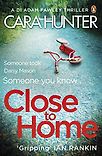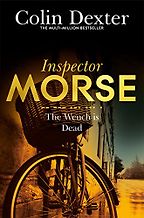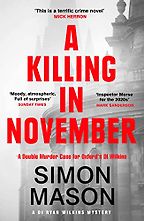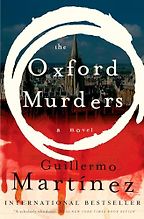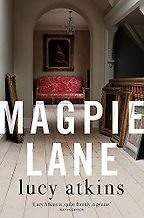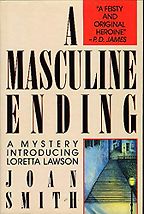Why do you think Oxford has been such a popular setting for crime novels over the decades?
It does go back a long way—with books like Gaudy Night (1935) and The Moving Toyshop (1946). It’s a very long-established tradition, but for me and my generation, it really is BC and AD: Before Colin, and After Dexter. If you’re writing Oxford-set crime, you can’t get away from that.
When I wrote Close to Home, my first Oxford-set book, I didn’t even call it Oxford. I thought, ‘Nobody wants any more crime set in Oxford!’ So I called it Kingstead. It’s a reference to Charles I, who was here during the Civil War. Stead is an Anglo-Saxon suffix which means ‘place’, so: King’s place.
I also had a lot of fun with other names in ‘Kingstead’. My personal favourite was to change Cowley (the location of the car plant in the East of Oxford that now belongs to BMW and makes Minis) to Carstow. Stow means ‘place of assembly.’ I didn’t use it in the end, because when Penguin bought the book, the first thing my editor said was, This is Oxford, isn’t it?’ She said, ‘Change it back to Oxford. Trust me. You’ll thank me.’ She was right because Close to Home has been translated into 30 or more languages now.
One of the main reasons for that is that everybody knows Oxford, and that’s largely thanks to Colin Dexter. Oxford has been put on the murder map of England. And it’s very beautiful. If you’re going to turn a book into a TV series, it looks amazing. What’s not to like? You have this marvellous hinterland of people’s awareness of this place.
I suppose in Dexter’s case (but not really mine), he also made the most of the university setting. Those were the type of crimes Morse was investigating. I’m surprised Oxford University had any teaching staff left after Dexter was finished! They were being bumped off left, right and centre.
There are also just a lot of writers living here in Oxford, I suppose?
Oh my goodness, yes! It’s the most wonderful place to stop you getting any sort of writer ego, because you’ll literally walk past someone in the street who’s far more famous than you are. You’ll never start thinking you’re anything important because the place is just heaving with them.
Close to Home was published in 2018, so you can’t always have been writing detective novels. What set you on the road to crime writing?
It’s one of those things I often get asked, ‘Did you always want to be a writer?’ I studied English literature at the university here in Oxford. I was always a reader, even as a tiny child. My parents told me I taught myself to read. I just always loved books.
But I didn’t always want to be a writer. I’m always honest about that because I want people to realise that there are lots of things in life (and writing, in particular) that you can come to later on. You don’t have to do it from the age of 17. I wouldn’t have had anything to say in my twenties. There are people who do, but I didn’t. Once you accumulate miles on the clock, you’ve got more to say, I think.
So I studied English and went into the City after that. It was the 1980s, so everyone was doing it. I was in finance for a while, then I moved sideways into PR, and started doing words again, rather than numbers, which was really nice. I did write books before Close to Home, in my real name, so I have written quite a few now. It just happened at the right time for it to happen.
Let’s turn to the books you’ve chosen. You’ve already mentioned Colin Dexter (1930-2017) and how his Inspector Morse series dominates Oxford crime writing. He wrote a dozen or more books, but you’re recommending The Wench is Dead, which is from 1989. By then he’d been writing them for just over a decade. Tell me more.
I didn’t actually start reading the Morse books until the TV series, and I’m sure a lot of people came to the Morse books that way. Though I will confess I prefer Morse on screen to on the page.
It’s certainly interesting to see how John Thaw (1942-2002), the actor who played Morse, influenced the development of the character. The character of Morse in the books changes over time once the TV series started, and he becomes a good deal grumpier. I think his car starts out as a Lancia and not a Jaguar too. Quite a lot of adjustments take place in the character, and that in itself, for another writer, is interesting to see—how one medium influences another.
This is going to be slightly heretical, but I also think some of the episodes written by other people for the TV series are better than the books. Some of the Morse books are wonderful, but for the TV series they brought some amazing writers in and came up with some fantastic episodes that weren’t based on the books.
“I’m surprised Oxford University had any teaching staff left after Dexter was finished”
The reason I’ve chosen this particular book, The Wench is Dead, is that it’s completely different to the rest. It’s very like another favourite book of mine, The Daughter of Time, by Josephine Tey. That book has an Inspector Grant who’s ill in bed, and he gets interested in Richard III and the murder of the Princes in the Tower. I read it when I was quite young, and it changed my view of Richard III completely. I think that happens to everybody who reads The Daughter of Time. They all come out thinking, ‘The poor man has been hard done by!’
It’s exactly the same setup in The Wench is Dead. Morse has got one of his recurrent health problems and reads a book about a murder on the Oxford Canal. (I live on the Oxford Canal, and my garden backs onto it. When I first read the book, I didn’t, but that’s an additional draw now).
It reads as if it is a real case, and it is based very closely on one. Dexter’s is set in 1859, and the one he bases it on was 20 years earlier, but a lot of it is taken from the real-life case. I just love that crossover and the Morse and the Josephine Tey setup. It’s very clever, and that’s the reason I chose it.
Let’s move on to A Killing in November by Simon Mason, which was shortlisted for a ‘Gold Dagger’ award in 2023. The book was published in 2022 so is firmly in the ‘After Dexter’ era.
I know Simon—he’s a lovely man and a really good writer. The third novel in the series, Lost and Never Found, came out this month. A Killing in November is the first, so I’ve chosen that one.
What he’s done is to modernise Morse. He’s got two main male characters for a start, so that’s a Morse and Lewis echo. They’re both called Wilkins but they’re very different. One’s very highly educated and self-confident; the other comes from the wrong side of the tracks. So Simon has got that contrast going on, which, again, is a bit Morse-like.
Simon also has the Morse milieu of the colleges. A Killing in November starts with the discovery of a body in a provost’s study: it doesn’t get much more Oxford than that. Let’s face it, most people outside this town wouldn’t even know what a provost is!
The books also have the same feel as Morse, in the sense that they’re quite traditionally written. I mean that in a good way. He’s harking back to the good old days of the Victorian novel. Simon is a beautiful writer and it’s very well observed.
If you look at the covers of the books, they all have black-and-white photos of very recognisable Oxford buildings. One of them is of the Bodleian Library. It’s a traditional photo but with a slightly interesting angle looking upwards. That’s the way Simon does his books, too. They’re traditional but with a slightly different angle, and stylish in the same way the photos are—the photos are a good reflection of what the books are like inside. He’s not trying to play Dexter at his own game, but it’s in the same tradition.
Whereas you had a different response to the Morse legacy?
In my books, I take a different approach. I only have one central character, not a pair, and that was a deliberate choice (partly because British policing isn’t done in pairs—that was always a fiction). My central character, DI Adam Fawley, developed almost like a photographic negative of Morse. He’s not grumpy. He doesn’t like classical music. He doesn’t drive the same car. He’s a married man, with a happy marriage. He and Morse are opposites and I play around with that as well. At one point in the first book, Fawley says, “The car’s a Ford, and I don’t do bloody crosswords.” He’s joking with the reader about the fact that he’s not Morse.
Also, the way I’ve structured my narratives is through ‘mixed media’, as they call it now. All of that is so not Morse—it could not be further from the way that Dexter structures a story. Dexter has proper chapters, often grouped as ‘books’, and he even has epigraphs. It really is like George Eliot.
So my approach and Simon’s are very different. I’m very hot on authenticity of procedure. I don’t think Simon would be upset if I said (and he’s said it to me before) that that isn’t really his first priority, which is very much in the Colin Dexter tradition. Early in her career, Val McDermid was talking to Colin Dexter about writing crime, and he said ‘I had written five Morse novels before I had even set foot in a police station.’ He just wasn’t interested in the nitty-gritty of how investigations work, but I’m really concerned to get that right, and I have a Detective Inspector who helps me do that.
Are the police quite amenable to letting a crime writer in to see how they operate?
It’s a good question. When I first wrote Close to Home, I thought, ‘I’m just a wannabe. I haven’t published this thing. It may never be published. Can I justify asking someone like that—a hard-pressed person who has a job that takes a lot out of them—for their time?’
So, I didn’t. I did all my research online. It’s amazing what you can find if you’re looking for it! When I got the deal with Penguin, my editor said, ‘Oh, it’s so authentic! Did you speak to a lot of police officers?’ I hadn’t spoken to anyone (!) and she thought I should, just in case.
So, I did. My local councillor introduced me to the former area inspector for North Oxford. He’s worked with me all the way through, and he’s fantastic. He’s learned a bit about how to write novels, and I’ve learned a lot about how to do investigations.
I’ll be doing a session at the Oxford Literary Festival with him and my CSI advisor. We did a session last year and it was a riot. Everybody loved it. They were so brilliant, funny, and informative. Those two guys are well worth coming to see.
I’ll also be doing a session on true crime with Victoria Selman, whose latest book draws to some extent on the Manson murders. We’ll be talking about true crime, in terms of the form and the subject matter, and how that informs the sort of fiction we write.
Let’s turn to your next recommendation, from 2003. It’s called The Oxford Murders, by Guillermo Martinez. I hadn’t heard of it and it looks very intriguing. Tell me what it’s about and why you chose it.
I picked it up when it first came out because it had Oxford in the title, so I suppose that proves my editor’s point. The author has a mathematics PhD, and you can really tell. It’s very pared down, very lean. In effect, it’s a puzzle written about a puzzle.
The narrator is an Argentinian maths student who has come over to do a term or two in Oxford. One day, in the company of a famous mathematician who’s written a book about mathematical series with a chapter about serial killers, he finds his landlady dead. Little cryptic messages are left that indicate this may be part of a series of murders.
The book is very clever. The characters are barely more than two dimensional, but you’re not reading it for that. It has some of the same puzzle elements that you would get in a Morse but from a mathematical—rather than a verbal—point of view.
And you can follow it, even if you’re not very good at maths?
Definitely! It’s not like you have to do calculations. He does give you a lot of theory, sometimes in slightly indigestible chunks, but it is fun. It reminds me of Eight Detectives, by Alex Pavesi. That was quite clever and very theoretical too. In his case, he looks at the different permutations of suspect, victim, and investigator. He proposes eight permutations, and the book includes eight short stories illustrating each of the possible combinations. Again, it has that very cerebral quality and isn’t so much about the characterisation or the settings; it’s about the puzzle.
Let’s move on to a very different book, Magpie Lane, by Oxford-based novelist Lucy Atkins.
This book has a crime at its heart, but I wouldn’t call it a crime novel. It’s got almost exactly the same setup as Close to Home, in that a young girl goes missing. It’s also set in Oxford but it’s quite a different world from the one in which Daisy Mason disappears in Close to Home.
Magpie Lane takes place in an academic setting. It’s set in an ancient college—I think it’s Corpus Christi, though it’s not called that in the book—and the child who goes missing is the daughter of the Master. He and his slightly erratic second wife live in the marvellous old Master’s Lodgings with lots of cubbyholes and secret places where odd things start happening. There’s a very spooky frisson to the whole thing.
It’s beautifully done. Lucy Atkins writes like an angel. She takes a lot of time on her books, and you can really see where the love and effort has gone. In this book, she reminds me of AS Byatt, who’s one of my all-time favourite writers. You feel the layers in the book, the density. It’s packed with ideas, with observations. And it’s a mystery as well. You want to know what happened. Where is the girl? What happened to her? I’m not going to spoil that.
The other thing is that Lucy Atkins really knows her Oxford. There are so many lovely little nuggets about the city that just get sprinkled in here and there but don’t get in the way—things I didn’t know. It’s a real joy to read—the city really breathes through the book. It’s wonderful. I recommend it very highly.
Lucy has recommended classic thrillers for Five Books. I remember her saying that she likes books where there’s a creepy edge, something just a bit off-kilter.
Yes, it’s exactly that, and Magpie Lane does it beautifully. The setting is so strong— both the city and the house. Like in a Charles Dickens novel, the setting is one of the characters.
I loved the Danish wife character, who wants to turn all the dark Oxford-y panelling (or was it the floorboards?) in the house white. It’s a very memorable book.
Yes, it’s one of those books that stays in your head. I read a lot of books and sometimes I can’t remember a single thing about them. That’s not the case with Magpie Lane.
Your final recommendation is from 1987, so we’re going back in time. This is A Masculine Ending, by Joan Smith, a book I don’t know.
Joan Smith wrote a series of five crime books; A Masculine Ending was the first. The main character is a feminist professor of literature called Loretta Lawson. The reason I put it on this list is that it was one of the books that inspired me to try and write crime myself.
I loved the main character—her being a professor of English ticked a few boxes for me, of course! I loved how clever the book is – not ‘cerebral’ in the way that the Martinez is, just very knowing, very witty. Everything about it drew me in, I wanted to try to do something just like that myself.
Loretta is a professor in London, and she has a friend called Bridget, who lives in Oxford. Loretta goes to Paris for a conference and borrows someone’s apartment. She gets there the first night, quite late, and realises there’s a man in one of the other bedrooms. She thinks, ‘Christ, I didn’t realise there was going to be anyone else here!’ and goes into the other room and locks the door. In the morning, he’s gone, but she’s shocked to find there’s a huge bloodstain in the bed. There’s also a critical theory journal in the man’s room, which Loretta takes back with her and it proves to be a big clue, which is brilliant—the idea of a journal about how one interprets literary texts becoming a clue in its own right.
The dead person turns out to be an Oxford professor, so a big chunk of the book is set in the Oxford academic environment, during the 1980s equivalent of the culture wars, when the structuralist and deconstructionist spat was going on in English faculties. That was fun for me because I was here at Oxford at that time.
Five Books interviews are expensive to produce. If you're enjoying this interview, please support us by donating a small amount.
The other four books in the series are just as good. The BBC made the first two into movies, with Janet McTeer, Imelda Staunton, and Bill Nighy. They were fantastic, but I just can’t get hold of them – if anyone has a DVD they could lend me, let me know! You can still get Kindle versions of the books though.
I met Joan Smith after I started writing, and we’re now very good friends. She does still write, but nonfiction, and she’s probably most famous for Misogynies, published in 1990. At the moment, she’s finishing a book on femicide in ancient Rome: The Julia-Claudians: Femicide and Resistance in the Early Roman Empire, which is coming out this year.
So for me, A Masculine Ending is not just a book about Oxford—it has a much more personal angle and that’s why I wanted to finish with it.
Before you go, for people who are new to your work, should they start with Close to Home? How many novels are there in the DI Adam Fawley series?
There are six that are out, and the seventh is on its way (it’s scheduled for release in February 2025). Ideally, you would read them in order, but only to follow the lives of the police team. The stories are all standalones: the crime in each case does not require any previous knowledge.
About three books in, I realised there were going to be readers coming to the series who might not have read the previous ones, so I started doing a little summary at the beginning about the police team. It’s a list of characters and how old they are and those sorts of details. I’ve had so many people come back to me since and say, ‘This is fantastic. Why does nobody else do this?’ I thought, ‘Hang on, this is nothing new—it’s just like the Dramatis Personae in a Victorian novel!’ It just seemed such an obvious thing to do. People seem to like it so I’ve carried on doing it.
And with last year’s standalone novel, Murder in the Family, did you just decide to have a break from DI Fawley?
It was a break for him and a break for me! One of my other friends who writes crime series refers to doing standalones as a palate cleanser, which I think is a very good analogy. Murder in the Family was set in London and all over the world—I had the characters going to Australia, Canada, Greece. It was nice to ‘get out of the town’ for a bit!
I had the idea of writing this one entirely as a screenplay. It’s taking mixed media to its furthest logical extension—there’s no conventional prose in the book at all. There’s no ‘me’ in the writing. It’s a screenplay with stage directions, with e-mails and voicemails and documents thrown in. It was so much fun. It was the most fun I’ve ever had at a laptop! I loved doing it, and readers seem to like it too—it was a New York Times bestseller, which was a life goal for me and a big thing for any Brit book.
The Sunday Times said that No Way Out was ‘one of the best crime novels since 1945.’ A lot of your previous books have done amazingly as well.
Yes. I’ve been lucky. Sometimes, you’re just in the right place at the right time. I’ve always believed that you earn your luck, though, through hard work. That’s what puts you in that right place when the luck comes knocking.
Your plotting is very good. With Close to Home, did the plot that come first?
It came to me as the twist, which is the big thing about that book—everybody talks about the twist! I remember once hearing Sophie Hannah at Harrogate History Festival. She had just started writing her Poirot Agatha Christie novels and she said, ‘You know you’ve got a really good twist if you can get it down to four words.’
If you think about The Murder of Roger Ackroyd, which is one of my favourite Christie books, the twist is: ‘the narrator did it’. For Murder on the Orient Express it’s: ‘they all did it’. You can do that with Close to Home. Close to Home has a four-word twist.
So do the plots normally come first for you?
Usually. When I wrote Close to Home, I had no idea it would be a series. I didn’t even think of it as a police procedural. It became that, at least in part, because it had to. When there is a missing child, there’s always going to be a police investigation. Adam Fawley just evolved as a necessary piece of plot machinery.
In a way, that was good because I didn’t think of him as someone who was going to have to carry a series. He just evolved in his own way through that book and became a character people were interested in. But that was luck, really.
The second book came to me not as an ending but as a beginning: a girl is discovered in a basement, locked in this big old house, with an old man living there who’s suffering from dementia and claims not to know who these people in his basement are. That book was triggered by the Fritzl case—the man in Austria who held his daughter captive in the basement for years.
So some books come to me as a beginning, some as a twist at the end. They almost never come to me as characters. Some writers do that, they’ll come up with a character and think, ‘I can turn that person into a story.’ But I tend to think plot first and character second.
I think that’s why I’m a fan. I really enjoyed the last DI Fawley, Hope to Die.
That was the one based on a real case in Australia. I watch loads of true crime TV, because I’m fascinated about people’s motives. These are real people who did real things, and I want to understand why. Why would you do that? That’s what I watch true crime for.
My husband’s cousin put me on to 60 Minutes Australia and I saw the episode about Keli Lane, who’d had five pregnancies when she was still living at home with her parents, and three full-term births. The first and third babies were adopted, but in 1996 the second baby disappeared. In 2010, she was convicted of killing that child, but the body has never been found and she still claims she is innocent. There’s footage of her, a few hours after the baby disappeared and she gave birth, in a white dress, at a friend’s wedding, acting as if nothing had happened. It’s just staggering.
I don’t think I would have got away with Hope to Die as a plot if I couldn’t have said to my editor, ‘It’s based on a real case!’ Keli’s story fascinated me because I was trying to think myself into the mind of someone who would behave like she did. And what if the child that had gone missing came back one day, what then? So that’s where Hope to Die came from.
Interview by Sophie Roell, Editor
January 29, 2024. Updated: June 28, 2025
Five Books aims to keep its book recommendations and interviews up to date. If you are the interviewee and would like to update your choice of books (or even just what you say about them) please email us at [email protected]

